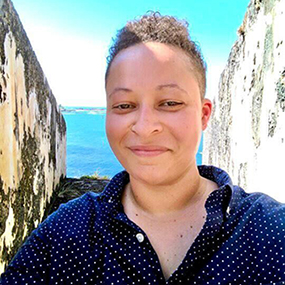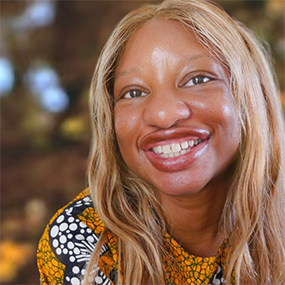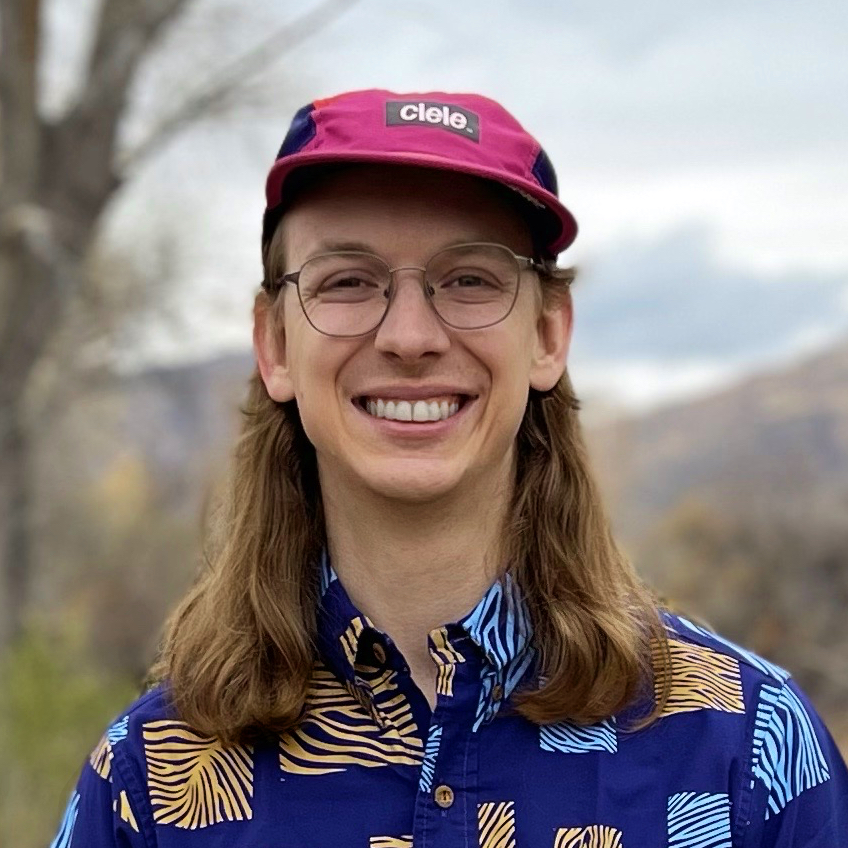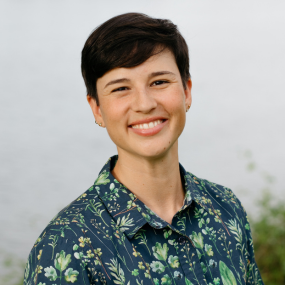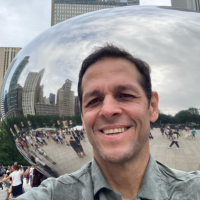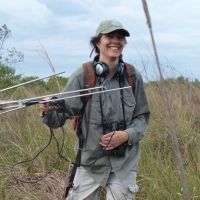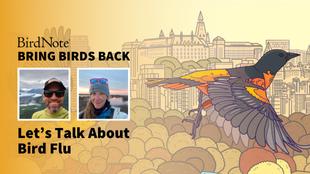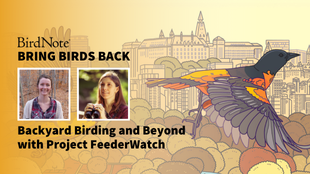

Join BirdNote tomorrow, November 30th!
Illustrator David Sibley and actor H. Jon Benjamin will face off in the bird illustration battle of the century during BirdNote's Year-end Celebration and Auction!
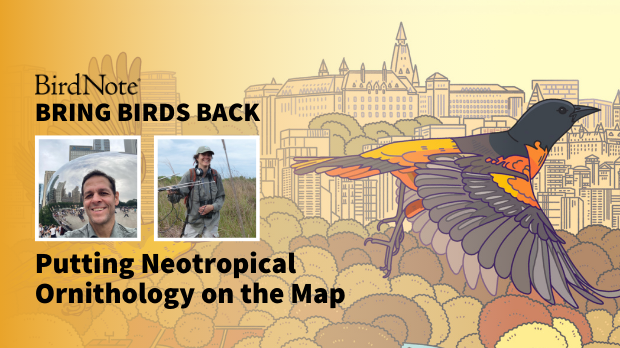
In 2023, over 120 contributors published a study in the scientific journal, Ornithological Applications, about a long history of exclusion Latin American and Caribbean scientists have faced. In the world of ornithology, the Global North (or rich and powerful regions like the USA, Canada, New Zealand, etc.) is king – but only because they’ve made it that way. Host, Purbita Saha, speaks with two of the study’s leading researchers, Dr. Ernesto Ruelas Inzunza and Dr. Kristina Cockle, about the ways research from the Global South (Latin America, Africa, the Caribbean, etc.) has been undermined, and how regional bias, racial discrimination, and socioeconomic differences have played a role. They discuss how this lack of acknowledgment is harming conservation efforts for birds and – teach us a thing or two about our feathered friends over in the Tropics!
*A previous version of this episode included closing commentary from a Neotropical scientist who was not a contributor to the highlighted scientific journal paper. Their comments have been removed from the episode.
Want more Bring Birds Back? Subscribe to our show and follow us on Instagram! For more about BirdNote, sign up for our weekly newsletter. And for ad-free listening and other perks, sign up for BirdNote+ here.
BirdNote is a nonprofit. Your tax-deductible gift makes these shows possible.
Bring Birds Back Season 6 is sponsored by the Cornell Lab of Ornithology and the American Bird Conservancy.
[BirdNote Presents stinger plays]
Purbita Saha: BirdNote Presents
This is Bring Birds Back. I'm Purbita Saha.
[film roll starts]
[music starts]
In the late 1960s, Eduardo H. Rapoport, an ecologist from Argentina, was living in exile in Venezuela. On the run from a politically unstable dictatorship, he wrote about a pattern he had noticed while traveling: the further you move from the equator, the number of species of birds and other wildlife generally decrease geographically. He essentially established the now-widely recognized pattern where species richness, or the number of different species in one area, increases toward the equator and decreases toward the poles.
Rapoport intended to submit his work to a Venezuelan scientific journal, but while on a trip to New York, he was encouraged by a colleague to write his findings in English and publish with The American Naturalist to reach wider audiences.
But Rapoport's English paper was rejected on the grounds that it was quote, "outside of the journal scope." So he spent the next several years expanding the article into a book titled "Areografía," originally published in Spanish in Mexico and later translated to English in 1982.
Nearly 20 years after Rapoport's paper was rejected by The American Naturalist, US-based tropical ecologist George Stevens proposed, submitted, and published an article in the same journal detailing the latitudinal ranges of species — and coined it "Rapoport's Rule." Dismissed when coming from a South American scientist, but respected when it had the support of an American.
[film roll ends]
This is just one of many examples cited in a groundbreaking paper in the journal Ornithological Applications, titled "Neotropical ornithology: Reckoning with historical assumptions, removing systemic barriers, and reimagining the future." Published in February 2023, the report was spearheaded by Letícia Soares at Western University in Canada and her colleagues — a total of 124 authors representing scientists from Mexico, Central America, South America, and the Caribbean — a region known as the “Neotropics”. The contributors spent more than three years creating a comprehensive overview of the state of ornithology in the Global South after centuries of colonialism and prejudiced practices by the Global North.
The Soares et al. paper defines the Global North as countries from "wealthier, geopolitically dominant regions" in the world, like the United States, Canada, Australia, New Zealand, and Japan, while the Global South is used in context for the rest of the world — "Africa, Latin America and the Caribbean," plus "most of Asia."
Let’s jump right in and hear from two of the lead authors of this paper, Dr. Ernesto Ruelas Inzunza and Dr. Kristina Cockle…
Purbita Saha: Thank you both. Welcome to the show. If you can just tell us about yourself and your work, that would be amazing.
Ernesto Ruelas Inzunza:My name is Ernesto Ruelas. I am a professor at the Universidad Veracruzana in Mexico. I study birds. I'm interested in frugivore seed dispersal, and I'm really, really interested in migrations.
Kristina L. Cockle:Hey, I'm Kristina Cockle. I'm a research scientist at CONICET in Argentina, and my work focuses mostly on conservation ecology of cavity nesting birds, and more recently, aerial insectivores– which are birds that forage for insects on the wing.
Purbita Saha:So given that you both work with birds, I'm curious how you grew a love for birds. Especially because, you know, here in the US, birding is traditionally seen as a hobby for white older men. So what has your experience been? And also, would you say that that stereotype is also the case for Latin America and the Caribbean?
Ernesto Ruelas Inzunza:I was probably 12 or 13 when I discovered I was really interested in birds. When I started, there were very few resources. I spent the first, uh, four or five years learning as a bird watcher without binoculars.
So one of the things I had to do is to look for birds and try to figure them out by their behavior or features that you could look at at a distance. So, I started being interested in herons and egrets and hawks and big things and, uh, later on, I moved into more complicated things for me, such as shorebirds or warblers. The makeup of the birdwatching community in Latin America - or I will speak more for Mexico - is very different than the one in the Global North. We have mostly students and young people who are interested in birds just as they are in orchids or insects or other things. So, I think that the basic drive is very similar to the one I had early on, which is to be a naturalist and understand the natural world.
Kristina L. Cockle: Unlike Ernesto, I was not a birder from an early age. I’m white. I grew up in Canada. I had this real connection with being outdoors, I grew up in the city. We sort of stereotype scientists as having grown up always being, like, really into explosions or really into, like, dinosaurs or whatever.
In my case, when it was time to choose a career, I really didn't know what I wanted to do, and I picked forestry because I didn't want to shave my legs, I didn't want to have to wear a dress. So, at the time it seemed like kind of a frivolous reason, but looking back, like, I was a queer, gender non-conforming teenager. Field biology gave me a space to belong.
I really loved the camping parts, like chopping wood, cutting trails and machetes. So it was really about, like, having this direct physical connection with the natural environment and the living world. And the community of people that I found myself in where, you didn't have to, like, perform femininity to the extent that I think I sometimes felt in the outside world.
I didn't really get into birds until my early 20s. I had already started my master's and I went to Paraguay to study birds. And at that time, like, I couldn't even tell the difference between a swallow and a nightjar. And I found myself in this very privileged position of being surrounded by, like, fantastic Paraguayan and Argentinian ornithologists who had so much to teach me about birds – and not just how to identify them, right?
So I think it was, like, more this fascination with the weird and wonderful lives of birds and not so much being able to identify species and having like a list of birds, which I've never really gotten into.
Purbita Saha: Ernesto and Kristina are friends who reconnected in 2020 to discuss their frustrations with a few papers published in major journals about Neotropical ornithology... through the lens of ornithologists from the Global North.
Ernesto Ruelas Inzunza: One of the articles that prompted our response was one that had a roadmap for Neotropical ornithologists to overcome the limitations that we've faced in developing the field.
Purbita Saha: That article, titled “A roadmap to identifying and filling shortfalls in Neotropical ornithology,” attempted to review the past 25 years of the under-represented science and to pay homage to the late Ted Parker, an American ornithologist who specialized in the Neotropics and died in a plane crash in 1993. But Ernesto and Kristina felt that the article largely erased and ignored the work of native and local experts. Even more, the article offered condescending “advice” to Neotropical scientists, the people who know the birds and environments at the heart of the matter best.
Ernesto Ruelas Inzunza: It was, at least from my personal perspective, a particularly irritating piece. Because it was very prescriptive. I mean, ‘You should do this, you should not do that, and follow these pathways,’ and it's organized in a remedial way. Like, ‘You're missing this, so you have to overcome it by doing that.’ And each of those shortfalls is named after a white scientist from the Global North. I'm not going to name them here because we respect a lot of them anyway. I'm kind of mad, like, I wouldn't dare to get together with five of my ornithologist friends from Latin America and then tell people from the Global North how to overcome their shortfalls of an Arctic or whole Arctic ornithology. Like, I wouldn't do it and I don't think it would be published.
Later, I found that somebody had already expressed outrage about that: Letícia Soares, the lead author of our article. So, I communicated with her and, uh, we started sending rounds of emails. Uh, at least I did, with some of my Mexican colleagues and then we discovered that there were people in Argentina having the same discussion and some people in other places. And we decided to join forces. Kristina has been a friend of many years and it was easy to connect for the joint endeavor.
Kristina L. Cockle:Although this was kind of like the straw that broke the camel's back, this has been going on for centuries, right? For 500 years. I felt it really deeply. Even, like, in the roadmap article, there's a picture of a white person working in a museum in England.
Even that, it wasn't even really that big of a deal. It was like, this has always happened. This is a really problematic structural problem, right? And it's part of a pattern that repeats where people from the Global North write about the Global South without including people from the Global South, and they make proposals without even consulting anybody in the Global South.
Purbita Saha: The article that Ernesto and Kristina wrote in response with their colleagues aims to set the record straight on four key points:
- Where neotropical ornithology is today
- The long history of inequality in science between the Global North and South
- How erasure and lack of acknowledgement for Latin and Caribbean experts is harming avian conservation
- And lastly, what they envision for a better future.
Mexico, Central and South America and the Caribbean are home to nearly one-third of global bird species. And because of that, the Neotropics have increasingly attracted ornithologists from all over the world.
Ernesto Ruelas Inzunza: In reading those pieces written with a Northern bias, you fail to recognize that there is actually a lot of people studying birds throughout Latin America and the Caribbean. And a lot of them, I will say most of them, get their training, their master's degrees and their PhDs in Latin American programs. Some countries that are becoming powerhouses of graduate programs, such as Argentina, Brazil, Mexico, Chile, and Colombia. I mean, many places where you see a great development in that front. And I'm talking about powerhouses leading cutting edge research that competes with the best that is done in the world. So ignoring that progress and the fact that the ornithological community of the Neotropics is really in charge of the development of the science is doing a disservice to it. Just recognizing it is important. That was one of our main goals in the article is to illustrate a perspective that is painted from where we stand on.
Purbita Saha: Ernesto says the Global North’s domineering influence in ornithology affects how the rest of the world values and understands the work coming out of the Global South. And it’s a major issue not only for scientists, but for bird conservation at large.
[Music starts]
Ernesto Ruelas Inzunza: There are several migration systems throughout Latin America, but let's think about the ones that breed in the U. S. and Canada, and then migrate south of the U. S. Mexico border for the non-breeding season. When you start looking at the literature, you discover that the knowledge that we have of those birds that live in two separate worlds, is very uneven. I mean, you have 95 percent of the literature is done in the north, in the breeding season, in their breeding habitats and so on. So, we don't know much about what happens to those birds in the non-breeding season or during migration.
So, that is a problem, right? You need to understand the situation of each individual species and also about the entire migration system to be able to come up with solutions. Uh, there was about three billion birds lost since the 1970s to the present.
So, we have lost a lot of birds out of not knowing what happens to them and where, and, uh, it also creates a lot of misconceptions and assumptions. For example, pesticides are more freely used in Latin America with less regulations and less law enforcement than they are in the north. So, therefore, the culprit must come from the non-breeding season. But when you start looking at the data, it's not always the case because the amounts of pesticides and chemicals that are used in northern agriculture way overpass the quantities that they use in the South. That's an example from the conservation perspective.
From the scientific perspective, we as scientists need to be open to paradigms coming from different places. There is a note in our article about people being surprised about neotropical birds being sort of slow-paced life birds. When you contrast them with migratory birds that do these amazing migrations and then come and breed in a matter of a few weeks and then start their migration again, you start looking at these very fast-paced birds. And then you come to the tropics and you see that life is slower and the productivity of those birds is also lower. Many of them only lay, you know, one, two, three eggs and their survival is really low. The existing paradigm is that birds must be a fast-paced organism and we're not willing to consider the idea that the basal state may be the slow-paced one that these birds evolve to overcome living in harsher conditions in the north.
So a lot of those paradigms that may come from just looking at things from a different perspective to thinking outside the box, are examples of ideas that could benefit the development of ornithology as a science. But if we close the door to them and are unwilling to provide an easy path for that science to enter the mainstream of ornithology, then we're in trouble. So, uh, the insight of people from the neotropics is critical.
[Music ends]
Purbita Saha: Critical in ways that we often don't hear about due to the erasure and exclusion of neotropical ornithology in most of our understanding about birds. Kristina explains, for example, how woodpeckers’ reputation as ecosystem engineers in North America doesn’t apply in the Neotropics — and why that’s vital to the conversation around conservation.
Kristina L. Cockle: Cavity nesting birds in North America primarily are occupying cavities made by woodpeckers.
[Pileated Woodpecker drumming]
Purbita Saha:“Cavity nests” are holes, typically found in old or dead trees, cliffs, rock crevices and other structures, that serve as shelter while birds nest and raise their young. Woodpeckers are known for using their beaks to chisel out nesting cavities during the breeding season, which are often reused by other birds in subsequent years.
Kristina L. Cockle: So, Woodpeckers are really important in providing cavities for other species that can't make their own cavity, but they require a cavity to build a nest.
[Purple Martins calling]
Purbita Saha:Species like Tree Swallows, Purple Martins, Tufted Titmice and White-Breasted Nuthatches use pre-existing cavities for their own nesting in temperate regions.
Kristina L. Cockle:And so, coming from North America, people assumed that our birds in Latin America would also require woodpecker cavities all the time in order to make their nests. And that's simply not true.
So, it turns out that in most of Latin America, especially in forests, most of those cavities are made just by fungus decaying the tree and the cavity is formed naturally over a much longer period of time, and usually in a larger tree.
So those considerations have really important consequences for conservation because it means that you would not just be conserving trees that woodpeckers are going to use but you need to focus on a whole different set of trees that are often living, they often have large branches and the cavities form when a smaller branch falls off the larger branch, and that whole process is very different than what occurs in North America. And it affects the decisions we make about what kinds of trees to conserve.
Ernesto Ruelas Inzunza: Yeah, we as readers and as consumers of the science that is published in the north, we tend to believe what we read, right? Uh, so, when I read a paper that tells me woodpeckers are ecosystem engineers for a whole host of cavity nesters, I don't have any reason to doubt that. But, it happens that many of those discoveries are not of universal application. You cannot issue a blanket statement and say, ‘This is the way things work.’ In South America, we have a sort of counterpart of birds called woodcreepers that, for the most part, do not excavate cavities. Some of them do, but it's a different family, it's a different ecology, it's a whole different thing.
[Olivaceous Woodcreeper song]
So it's not easy to just come in and discover something in the north and then pretend that it applies to anything that is done in other places.
[Music begins]
Purbita Saha: Next up: Ernesto and Kristina get more in depth about the unique challenges Neotropical ornithologists face in their field and some suggested methods of tackling them head-on. And later, we hear from a small group of additional contributors to the Soares et al. paper about their personal reflections since the article’s release. Be right back.
[Music fades]
MIDROLL
Purbita Saha: We’re back with Kristina Cockle and Ernesto Ruelas Inzunza, two leading authors on the Soares et al. Neotropical paper. In it, the contributors cite woodpeckers as just one of many important distinctions between bird behaviors in the Global South and the Global North. In North America, woodpeckers are considered "ecosystem engineers" due to the fact that non-excavator birds rely so heavily on them to create cavities for nesting.
But in the tropics, birds are able to find and make nests without the help of these excavators, which drastically shifts their ecosystems compared to more temperate regions and proves the scientists’ point that modern bird conservation tools are not universal.
Kristina and Ernesto say that the issue with research from the Global North being heralded as blanket truths across the world affects more than the science. The systemic inequities across race, class, funding, infrastructure and more have been affecting academic growth for centuries- and it's time to not only raise awareness globally, but implement practical changes, too.
Kristina L. Cockle:We're in a system, right? And the system is white supremacy and cisheteropatriarchy and we have all of that. And that is in Latin America and North America, and it's everywhere in the world. And it's kind of the water we swim in, right? The air we breathe. And it's really difficult to dismantle all that, right? It's not going to happen quickly in our lifetime, probably, but I think we can really work on noticing it.
So what I really liked about the paper was that it's this sort of critical consciousness, right? If we reflect on what's going on and see there's a systemic issue here. And then once we can see that there's a systemic issue, you can't unsee it, right? Like, you start noticing it everywhere. And then, each person has a sphere of influence where we can make change, including within ourselves. And we can transform our research and we can transform a part of the world.
A lot of it is about internal work, within ourselves, to question the way we've always done things.
Ernesto Ruelas Inzunza: Yes, I would like to add that along the process of preparing this manuscript, as you can imagine, with so many contributors and so many opinions, it was not an easy thing: how to make a cohesive message. For example, we were challenged to provide our own roadmap by some of the authors and by our reviewers and editors. So, we didn't feel exactly ready to put together a road map because there should probably not be one but several. And, mostly, our interest was on identifying some of the key elements that should be a part of it. That roadmap will be more effective if it contains different views.
Kristina L. Cockle: And, even though we had 124 authors on that paper, we don't represent the Neotropics. There's communities all across the Neotropics of people that are interested in birds and love birds and they were not included.
And so, to sort of say, ‘We are the scientists and we're going to make this roadmap,’ it seems wrong. I think it's more about, like, not so much having a roadmap, but having clarity about our values, right? Like, what kind of a world do we want?
Ernesto Ruelas Inzunza:The other part that was fairly easy to put together was identifying the barriers. I mean, we were not in the discussions when scientists decided that the language for communication was English. Uh, Latin America speaks mostly Spanish and Portuguese. In the world, there are more Spanish speakers than native English speakers, so that creates a difficulty for us, and also within our countries, we have a very small percentage of people who writes good enough English to get a paper published.
It's a demanding process to publish a peer review article. Publishing a paper costs money and for some of us, is more than our annual budget for doing the actual research. So we need to figure out easy ways or creative ways to publish our papers in the most visible journals without having to pay or having to sell an arm or a leg in the process, right? Identifying those barriers, uh, was also one of our main goals, and there was quite an easy agreement on that. I mean, limitations to access information, uh, the peer review literature is now mostly behind paywalls. And so that creates a system of exclusion as well.
[Music begins]
Purbita Saha: The Soares et al. article was published in English, and Spanish and Portuguese, pushing back on some of those barriers. But the issues with English being the dominant language also extends to common bird names.
Ernesto Ruelas Inzunza: One of the missing opportunities of not knowing much about the local culture around the name of a bird is that you miss, in some cases, an easy way to identify them. In example, we have a shorebird here that we call Spotted Sandpiper in English.
[Spotted Sandpiper calls]
The scientific name is Actitis macularia, the same thing, so it makes a note about the fact that it's got dots in the belly, right? When the migrants arrive, they are in non-breeding season plumage, they don't have dots, so why should we call them, uh, Spotted Sandpiper here if they don't have spots? So it's kind of misleading. It's like, ‘Oh, that's a spotted sandpiper.’ It's like, where are the spots? No, not a single one, right?
[Spotted Sandpiper calls]
in Veracruz, we call them alzacolita, which makes a statement about that it lifts the tail. When it walks, it lifts the tail. So, ‘alzacolita’ makes a lot of sense, you can remember it, and if it behaves like that, it's gotta be the Spotted Sandpiper, right? The Groove-billed Ani, if you want to see the bill, you have to have binoculars, but anybody can hear it, the call “pijui, pijui.”
[Groove-billed Ani call]
And that's the name of it in Spanish: pijui.
[Groove-billed Ani call]
So, you miss a lot of educational opportunities on having names that reflect vocalizations or some kind of movement or whatever, right? A feature that can be easily told in the field. Whoever is going to be working on renaming those birds needs to think of these and have a, uh, keen attention to including some of that.
Kristina L. Cockle: Yeah! And the whole idea that the point is to discover something and then give it a name is a very colonial endeavor. And for Europeans– especially during, like, the time when most of these birds were named officially in English– was, ‘I discovered this bird by shooting it and taking it to a museum and therefore I'm going to name it.’ And the person that would name it would be in a museum so they wouldn't know anything about the the song of the bird or where it lived and so they would just put a name like ‘Plain-Winged Woodcreeper,’ but in fact those birds already had Indigenous names that explained their behavior and explained their vocalizations, and were probably being used by the Indigenous people to hunt the birds or to show the European naturalist where the bird was.
Often the Indigenous person was the one catching and killing the bird for this collection, as a sort of unappreciated and undervalued field assistant that's never named. And, in fact, a lot of that work was done in collaboration with military takeover of land. So it's like, part of laying white people's claim to the land was to collect and name birds and have a big bird collection and say, like, ‘Oh, we've got all the birds of Canada,’ or ‘We've got all these birds of Argentina.’
I do see it very kind of linked to genocide and linked to this colonial takeover of the Americas and um, That's why I think that it's good to be questioning that and good to be rethinking.
[Music ends]
Purbita Saha: Kristina and Ernesto also bring up the issue of “parachute science,” a term used to describe when researchers, usually from wealthier countries, drop into a foreign community without including local experts– a problem particularly troublesome in the Neotropics where culture and nature often go hand in hand.
Kristina L. Cockle: Scientists didn't really consult, like, local communities or Indigenous people to find out where birds were nesting. I mean, the Aché, for example, in Paraguay, were finding nests all the time and eating the nestlings and the eggs from them. So, they knew all about where birds nested, but it wasn't in the scientific literature.
There's a really great book that I love by Rubén Chachugi in Paraguay. He's Aché. And the book talks about The Aché relationship with the birds and all the different names for the birds, and how people use the birds, how people relate to birds. For the Aché, the birds have, like, a life essence, that if a pregnant woman eats the bird at a certain time, the bird's life essence transfers to the baby, and then the baby takes the name of the bird.
There's like a lifelong spiral of respect between the people and the animal. So, this kind of work, you know, it's really outside of our comfort zone as scientists but I think it's so exciting to have these opportunities to learn other ways of thinking about animals.
Cecilia Salinas, an anthropologist, talks about this in her thesis: giving binoculars to indigenous Guarani people so that they can show birds to tourists in the way that tourists want to see birds. Instead of, like, the Mbeya people, the Guarani people, teaching the tourists how they interact with birds in the forest, which is very different, right? It’s with their ears.
They probably, like, rarely see the birds, they're hearing everything, and they know all the birds by sound. But the paradigm coming from the Global North and adopted by the Global South is this paradigm that the way that colonizers do it is the right way.
Purbita Saha: Yeah, I think you both covered your, uh, kind of personal experiences and personal reflections quite well. But what has the wider response to the paper been like, both among colleagues in the Neotropics and also those in the Global North?
Kristina L. Cockle:Well, I think it's been really transformative. It's been very, very widely read. I've had other colleagues from Canada contact me saying that it really just changed how they thought, and there were things that they had never thought about before. People wanting to know “What can I do?” And then, from Latin America, most of the feedback that I got was like, ‘I thought that it was just me and there was something wrong with me. And now I can see that there's a system.’ And that we can be conscious of that system. We can work to dismantle it. And we can also, at the same time, find things like pockets of joy and hope, and create our own counter spaces that we do differently.
Ernesto Ruelas Inzunza: We all got emails from colleagues and stuff and, uh, one was from one of my friends who works in forest ecology and always gives me a hard time about my interest in birds, and I give him a hard time over his interest in the shapes of leaves and trees. And anyway, he wrote me this half-a-page email that ends on the bottom like, “I could have replaced birds with trees and it would have been exactly the same in my field.” So that was an interesting thing and I think it's been very helpful to talk to different audiences and get to interact with the authors about things. But it was a wonderful experience for me to feel that a lot of things that they felt was their problem, it's actually everybody's problem.
Purbita Saha:So you laid out some ideas for what it would look like to reimagine a more balanced and fair world in ornithology. What is at least one important actionable way to help push the field forward? What's a change that you would love to see in the next few years or the next decade?
Ernesto Ruelas Inzunza:From our own modest contribution as journal editors, for example, I have seen many papers returned to some of my colleagues and either rejected or almost rejected on the basis of not having a good English narrative. The science is probably good, but they were rejected because their English needed work. And that's a problem because what we want is good science published and those small problems like fixing the grammar of a paper is something that can be done, it's not the basis for rejecting a paper.
And the cost of publication is another thing that is truly a barrier. For a grad student from Mexico or Argentina, uh, publishing a paper may be $1500, $2000, $3000– that's not something that you have in your pockets. Your own monthly fellowship is less than that.
Kristina L. Cockle:Most of the population of the world, we really just don't listen to at all when we're making conservation plans. There's this idea that we have to act now, and if that means we have to sacrifice Indigenous peoples sovereignty over their land, or we have to sacrifice some Afro-descendant communities, that's considered to be an acceptable sacrifice.
And I don't consider that to be an acceptable sacrifice. There's a paradigm that's coming from the Global North, but that's adopted in the Global South as well, to see the solutions as being kind of these capitalist solutions.
I think a big thing is recognizing the work and the knowledge of people from the Global South, especially Black and Indigenous people. And that takes a bit of work because it means reading work from the Global South and just having it on our radar all the time.
So, I think there's a big piece there with, like, recognizing other ways of knowing, other ways of interacting with animals that aren't just sort of the European standard way that was brought in the last 500 years.
Purbita Saha: The authors from the Soares et al. paper outline a list of 15 proposed changes with the goal to "promote meaningful collaborations”, “promote diversity”, and “strengthen funding and professional development." Some of these suggestions include having "institutions explicitly acknowledge the colonial legacy in the Neotropics," "journals and funding agencies [requiring] researchers to reflect on… equity and inclusion," and "Neotropical institutions develop[ing] local evaluation methods."
Finally, we wanted to give a few of the 124 contributors on the paper an opportunity to share their own thoughts, hopes and wishes about the article since its release.....
Ancilleno O. Davis: I'm Dr. Ancilleno Davis, senior scientist and CEO of Science and Perspective, working in the Bahamas.
Adrianne G. Tossas: I am Adrianne Tossas, an ornithologist from Puerto Rico, and I am also the president of Birds Caribbean.
Fernando G. López: Fernando López, Argentinian but living in the US. I am [a] postdoc at [the] Smithsonian Institute.
Martin Quiroga: Martin Quiroga. I'm from Argentina, but I'm currently living in the Dominican Republic, and I'm a biologist in ornithology.
Cecilia Cuatianquiz Lima: I am Cecilia Cuatianquiz Lima from Tlaxcala, a small town in central Mexico. I am a biologist with a strong interest in the study of birds.
Much of this knowledge [of] the adaptations and behaviors of neotropical birds has been generated through the observation of indigenous and local communities who interact with these birds daily.
Martin Quiroga: I didn't realize that there is little knowledge of how science is done in the Global South. The limitations we have, the strong footprints of scientific colonialism. You know, access to even basic equipment is pretty hard and that definitely limits the chances of doing quality science down here.
Ancilleno O. Davis: The $20,000, $30,000 that you may spend on getting a northern scientist to come down, that money could fund a local person to protect that species and its habitat and educate our family and friends that live around us and get even more participation.
Cecilia Cuatianquiz Lima:Lack of support for these groups hinder the dissemination of their research, blocking global knowledge.
Adrianne G. Tossas: And as we know, we are facing very important challenges for the conservation of bird species, especially in the Western Hemisphere.
Fernando G. López: Many studies and conservation decisions have been led or taken by scientific or NGOs from outside the Neotropic. The local voice is not there.
Fernando G. López: One thing that the world should know is that one third of the global bird population is here and that is a lot.
For example, we have almost 35 percent of the raptors in the world, and if we count, for example, the first 15 EDGE species, we have one quarter of them.
Adrianne G. Tossas: I am very happy to see very rapid responses after the publication of this important paper. For example, seeing Latin American ornithologists being appointed as editors of important journals has been one of the major accomplishments, and the recognition that Latin American ornithologists need to be included in decision making,
And bringing underrepresented minorities to these discussions. For example, there is this big project that is being promoted by the American Ornithological Society in collaboration with Wilson Ornithological Society and the Association of Field Ornithologists, trying to create groups that include ornithologists from different backgrounds.
Fernando G. López:We need to make sure that the decisions about the birds in the Neotropics are driven by the people who live and work there everyday.
Adrianne G. Tossas: It is very important for all of us to come up with solutions for the conservation of migratory bird species, and also to address the challenges that our native bird species are facing in the Neotropics.
Martin Quiroga: We still have a long way ahead, but I'm confident that this is the base for many, many interesting changes in the future.
Purbita Saha: Thanks to Ancilleno Davis, Adrianne Tossas, Fernando López, Cecilia Cuatianquiz Lima, and Martin Quiroga for adding their voices to this episode.
If you’re wondering what you can do to learn about and support more Neotropical ornithology, we encourage you to first, read the Soares et al. paper and share it far and wide. Be more intentional about donating to organizations and scientific works in the Global South and simply follow and read more studies from local scientists worldwide.
While technologies such as eBird (Cornell Lab of Ornithology) and the Global Biodiversity Information Facility (GBIF) are helpful for connecting the world, issues remain regarding diverse participants and locations, which makes them less effective tools for learning about bird knowledge from the Global South.
As an alternative, Kristina and Ernesto have shared Spanish and Portuguese websites where you can learn more about local and regional studies throughout the Neotropics, including organizations like ornitologíaS and Proyecto Selva de Pino Paraná, which can be translated to English on most browsers.
I know I’m ready to learn more bird names in Spanish–and visit more countries in the Neotropics to meet and see the local experts in action, are you?
Nunca es tarde para aprender; It's never too late to learn.
[Music break]
Many thanks to Ernesto Ruelas Izunza and Kristina Cockle for their time and profound insight. As well as the additional contributing ornithologists from the Global South.
To learn more about Neotropical studies, ways to support research in the Global South and how to advocate for more balanced coverage in the Global North, visit BirdNote dot org.
Follow us on Instagram, @ Bring Birds Back, for the latest updates about the show.
Bring Birds Back is created by our production team, including producers Mark Bramhill and Sam Johnson; our Managing Editor, Jazzi Johnson; our Fact-checker, Ariana Remmel; and our Content Director, Jonese Franklin.
Our music is by Cosmo Sheldrake and Blue Dot Sessions. And this episode was hosted and co-produced by me, Purbita Saha.
Happy birding everybody!
[Music ends]
Ernesto Ruelas Inzunza is a graduate of the Faculty of Biology of the Universidad Veracruzana (Terrestrial Ecology, 1991). Ernesto completed doctoral studies at the University of Missouri-Columbia (ecology, evolution, and behavior, 2005), and held two postdoctoral research and teaching positions at Cornell University (2005–2008) and Dartmouth College (2008–2011).
Most of his research has focused on the ecology of bird populations: migration, frugivory and seed dispersal, contamination, ecomorphology, and population ecology. He has taught undergraduate and graduate courses in the United States, Costa Rica, Peru, the Cayman Islands, and Mexico. He has published the results of his work in articles for the general public, scientific journals, and books.
As a practitioner, Ernesto has also worked for many years in ecosystem conservation and habitat restoration in southeastern Mexico, Central and South America. He founded and directed Pronatura Veracruz A.C., a non-governmental organization dedicated to nature conservation, for nearly a decade. For several years he led expeditions and rapid biological and social inventories in the Andes-Amazon region for the Field Museum in Chicago and contributed to the creation of protected areas in the western Amazon. He serves in the board of conservation non-profits and ornithological societies in Mexico and the United States.
Since 2015 he is a professor-research scientist at the Institute of Biotechnology and Applied Ecology of the Universidad Veracruzana and editor-in-chief of the Wilson Journal of Ornithology, a peer-reviewed scientific publication.
Kristina Cockle works collectively with academic and non-academic colleagues to study the ecology, natural history, and conservation of birds, and to develop systems for equitable research in Latin America. Their work takes them into rainforest canopies, flooded grasslands, rural schools, our colonial past, and our reimagined future. Much of their research has focused on tree-cavity-nesting communities and grassland nightjars in northeastern Argentina.

